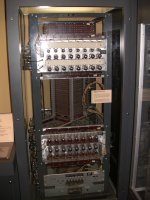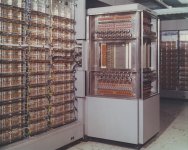I've always been fascinated by the seemingly immortal mainframe lineage birthed by the IBM System/360. From the start S/360 was conceived as a scalable family going all the way from very large mainframes down to (at the time) fairly modest almost-minicomputers, and it also had as a design goal to unify the split between IBM's "Business" and "Scientific" mainframe lines. (Up to this point IBM had built completely different and incompatible machines for different kinds of applications.) As a result the S/360 ended up as an incredibly flexible modular platform, that even had the capacity to emulate some of their older mainframe lines using a combination of software and loadable microcode.
The architecture pioneered a lot of things which became industry standards, like eight bit bytes, 32-bit words, byte-addressable memory, etc. The S/360, starting with the Model 67, also introduced the concept of address translation and virtual memory to IBM mainframes; it didn't become standard until the System/370 in the 1970's, but as a result of it IBM's mainframes became all about using virtualization to allow a single machine to run different generations of software and even multiple different operating systems simultaneously. Software written for the S/360 will still run on a modern zArchitecture IBM mainframe thanks to virtualization, and of course we wouldn't have the modern concept of cloud computing without it either.


